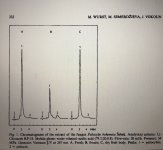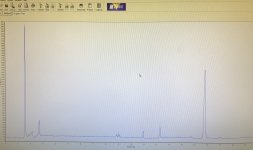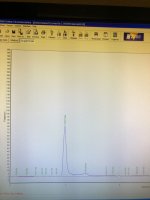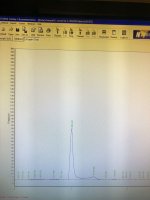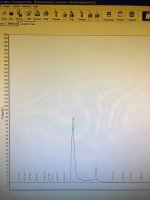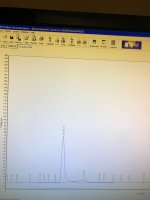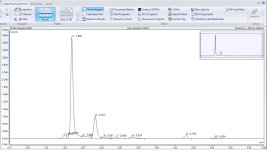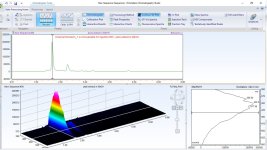*edit 12/29/21.. link deleted, was for an unrelated book*
This procedure was replicated by sonication @ 80W, of a dry gram of p.cubensis aborts in ~50 mL hplc-grade methanol for 10 mins at 25 C , followed by magnetic stirring for 24 hr. The solution was filtered through 0.44 um syringe filters into 1.5 mL autosampler vials. HPLC-UV analysis was conducted isocratically, the mobile phase consisted of 10:90:1 MeOH:H2O:AcOH, at 333 uL/min. @ 25C. Excitation wavelength was 283 nm. The column used was a Phenomenex Kinetex C18 100x2.1mm, 2.6um 100Å.
The implications are clear. This is a potency/purity assay that would be very useful for biotransformation studies.
The bottom chromatogram is an ongoing investigation, as six fractions were collected for further analysis. Separation was done with a ramp gradient from 100% of the aforementioned mobile phase, to 100% of 0.1% Formic acid in Acetonitrile, over the course of 10 mins, holding at the latter mobile phase for the duration.
This procedure was replicated by sonication @ 80W, of a dry gram of p.cubensis aborts in ~50 mL hplc-grade methanol for 10 mins at 25 C , followed by magnetic stirring for 24 hr. The solution was filtered through 0.44 um syringe filters into 1.5 mL autosampler vials. HPLC-UV analysis was conducted isocratically, the mobile phase consisted of 10:90:1 MeOH:H2O:AcOH, at 333 uL/min. @ 25C. Excitation wavelength was 283 nm. The column used was a Phenomenex Kinetex C18 100x2.1mm, 2.6um 100Å.
The implications are clear. This is a potency/purity assay that would be very useful for biotransformation studies.
The bottom chromatogram is an ongoing investigation, as six fractions were collected for further analysis. Separation was done with a ramp gradient from 100% of the aforementioned mobile phase, to 100% of 0.1% Formic acid in Acetonitrile, over the course of 10 mins, holding at the latter mobile phase for the duration.

